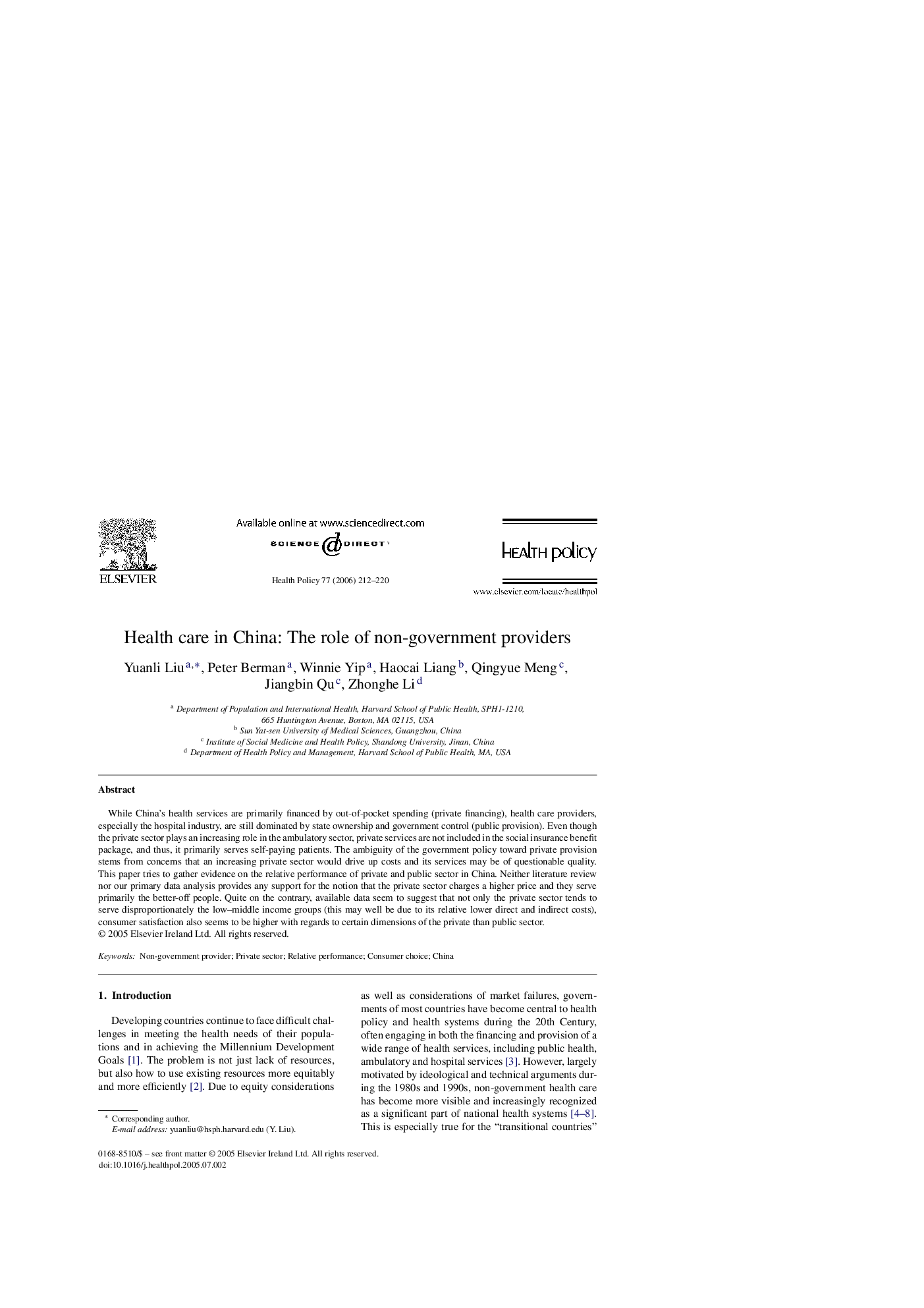| Article ID | Journal | Published Year | Pages | File Type |
|---|---|---|---|---|
| 4199064 | Health Policy | 2006 | 9 Pages |
While China's health services are primarily financed by out-of-pocket spending (private financing), health care providers, especially the hospital industry, are still dominated by state ownership and government control (public provision). Even though the private sector plays an increasing role in the ambulatory sector, private services are not included in the social insurance benefit package, and thus, it primarily serves self-paying patients. The ambiguity of the government policy toward private provision stems from concerns that an increasing private sector would drive up costs and its services may be of questionable quality. This paper tries to gather evidence on the relative performance of private and public sector in China. Neither literature review nor our primary data analysis provides any support for the notion that the private sector charges a higher price and they serve primarily the better-off people. Quite on the contrary, available data seem to suggest that not only the private sector tends to serve disproportionately the low–middle income groups (this may well be due to its relative lower direct and indirect costs), consumer satisfaction also seems to be higher with regards to certain dimensions of the private than public sector.
